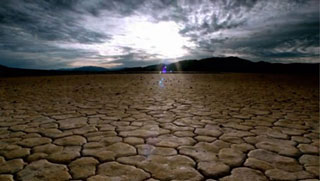HEATHEAT Teacher’s Guide home page About the Film  Melting glaciers, rising sea levels, fires, floods and droughts. On the eve of a historic election, award-winning producer and correspondent Martin Smith investigates how the world's largest corporations and governments are responding to Earth's looming environmental disaster. With that sense of urgency in mind, Smith traveled to 12 countries on four continents to investigate whether major corporations and governments are up to the challenge. The report paints an ominous portrait. Despite increasing talk about "going green," across the planet, environmental concerns are still taking a back seat to shorter-term economic interests. Watching the Film Teachers can either assign the film for viewing as homework or show the film in class. Suggested discussion questions are provided. The lessons and activities in this guide are focused on excerpts from the film and can be viewed on DVD in class or online. Introduction and exit indicators are provided for each segment. Note to Teachers This guide is intended for classes in social studies, civics and government, environmental studies, language arts, current events and history; Grade Level 9th – 12th. The guide examines the political, economic, and social costs and benefits of addressing the global change issue as presented in the HEAT documentary. You can modify the lesson to accommodate instructional time and student abilities. Discussion Questions: This guide includes a list of questions for students to discuss after viewing HEAT. Featured Lesson Plan: “A Daunting Task: Cost/Benefit Analysis of Acting on Global Warming” Lesson Objectives: Students will:
Additional Lesson Ideas: FRONTLINE’S Hot Politics Energy Companies’ Media Messages The President’s Energy Policy PBS NOW with David Brancaccio The Heat over Global Warming Lesson Plan ADDITONAL RESOURCES: An annotated list of relevant Web sites. Purchasing the Film: HEAT can be purchased from Shop PBS for Teachers. Also, teachers and students can watch the film streamed on FRONTLINE’s Web site www.pbs.org/frontline/heat Credits: This teacher’s guide was developed by Simone Bloom Nathan of Media Education Consultants. It was written by Greg Timmons, curriculum writer and educational consultant. Advisers were Ellen Greenblatt of The Bay School, San Francisco, and Debra Plafker Gutt, Stuyvesant High School, New York. |
ABOUT THIS GUIDE Teacher’s Guides Home PageFeatured Lesson Plan |